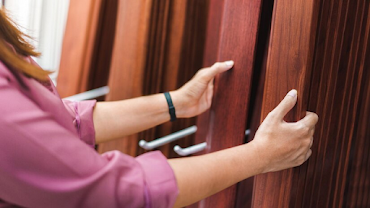The Art of Louvered Doors: Blending Form and Function
Introduction
Doors are an essential element in the architecture and design of any space, be it residential or commercial. They serve as functional barriers that provide privacy, security, and access while also contributing significantly to the aesthetics and ambiance of a room. Among the various types of doors available, louvered doors stand out as a unique and versatile choice that seamlessly blend form and function. In this article, we will explore the world of doors louvered, delving into their history, design characteristics, practical applications, and the benefits they bring to spaces.
Louvered Doors: A Brief History
Louvered doors, characterized by their slatted or angled slat construction, have a rich history that dates back centuries. The design of louvered doors was originally conceived to address specific functional needs while also incorporating an element of style. Here is a brief overview of the evolution and history of louvered doors:
Ventilation and Privacy: Louvered doors initially gained popularity in warm and tropical climates. They were designed to provide ventilation and airflow while still maintaining privacy and security.
Colonial Influence: During the colonial era, louvered doors became prevalent in regions with hot and humid climates, such as the Caribbean, Southeast Asia, and the southern United States. Their design allowed for natural cooling while keeping insects and pests out.
Architectural Integration: As architecture evolved, louvered doors found their place in various building styles, including Colonial, Caribbean, Victorian, and more. They were often used in entrances, closets, cupboards, and as room dividers.
Modern Adaptations: Today, louvered doors have evolved to suit contemporary design preferences. They are not limited to tropical regions but are used worldwide, both indoors and outdoors, in various applications.
Design Characteristics of Louvered Doors
Louvered doors are distinctive in their appearance due to their slatted construction. These slats, known as louvers, are designed to allow for the passage of air and light while maintaining privacy. Here are some key design characteristics of louvered doors:
Slatted Structure: Louvered doors feature a series of horizontal or vertical slats, which can vary in width and spacing. These slats can be fixed or adjustable, depending on the desired functionality.
Material Variety: Louvered doors can be crafted from various materials, including wood, metal, glass, and composite materials. The choice of material can significantly impact the door's aesthetics and durability.
Orientation: Louvered doors can have horizontal or vertical louvers. Horizontal louvers are often used for privacy, as they limit the line of sight, while vertical louvers are preferred for ventilation and light control.
Operability: Some louvered doors are designed to be operable, allowing you to adjust the angle of the louvers to control airflow and light. These adjustable louvers offer versatility in terms of functionality.
Practical Applications of Louvered Doors
Louvered doors are versatile and can be applied in various architectural and interior design contexts. Their unique combination of form and function makes them suitable for a wide range of applications. Let's explore some of the practical uses of louvered doors:
Closet Doors: Louvered closet doors provide ventilation to prevent mustiness in enclosed spaces while concealing the contents of the closet.
Room Dividers: Louvered doors can be used as room dividers, allowing for visual separation between spaces while still maintaining a sense of openness.
Cabinet and Cupboard Doors: Louvered doors are often used in kitchen cabinets, bathroom vanities, and storage cupboards, offering both ventilation and style.
Exterior Doors: Louvered doors can be used as exterior doors, particularly in regions with warm and humid climates. They provide ventilation while maintaining security and privacy.
Patio and Porch Enclosures: Louvered doors are used to enclose outdoor spaces like patios and porches. They allow for airflow and light while protecting against insects and debris.
Shutters: Louvered shutters are a popular choice for windows. They provide privacy and light control while adding a touch of elegance to the exterior of a building.
Benefits of Louvered Doors
Louvered doors offer a host of benefits that make them a valuable addition to any space. Here are some of the key advantages of using louvered doors:
Ventilation: Louvered doors are excellent for promoting airflow and natural ventilation, making them ideal for spaces that require fresh air circulation.
Privacy: The slatted design of louvered doors allows for privacy while still allowing some visibility. This balance between openness and seclusion is highly desirable in various settings.
Aesthetics: Louvered doors add a unique and stylish touch to any room or architectural design. They can enhance the visual appeal of a space and contribute to its overall ambiance.
Light Control: The adjustable louvers in some louvered doors allow for precise control of natural light, making them an excellent choice for spaces where lighting conditions need to be managed.
Versatility: Louvered doors are versatile and can be customized to suit specific functional and design requirements. They come in various materials, sizes, and orientations to match the intended application.
Durability: Depending on the material chosen, louvered doors can be highly durable and long-lasting, making them a practical investment.
Temperature Regulation: Louvered doors can help regulate indoor temperatures by allowing hot air to escape and cool air to enter, reducing the need for mechanical cooling in some cases.
Conclusion
In conclusion, louvered doors are a remarkable fusion of form and function with a rich history and enduring appeal. Their slatted design allows for ventilation, light control, and privacy, making them a versatile choice for a wide range of applications. Whether used as closet doors, room dividers, cabinet doors, or exterior entrances, louvered doors add a unique aesthetic dimension to spaces while also serving practical purposes.
The versatility, aesthetics, and functionality of louvered doors make them an excellent addition to both traditional and contemporary design schemes. By seamlessly blending form and function, louvered doors continue to be a timeless choice in architecture and interior design.




Comments
Post a Comment